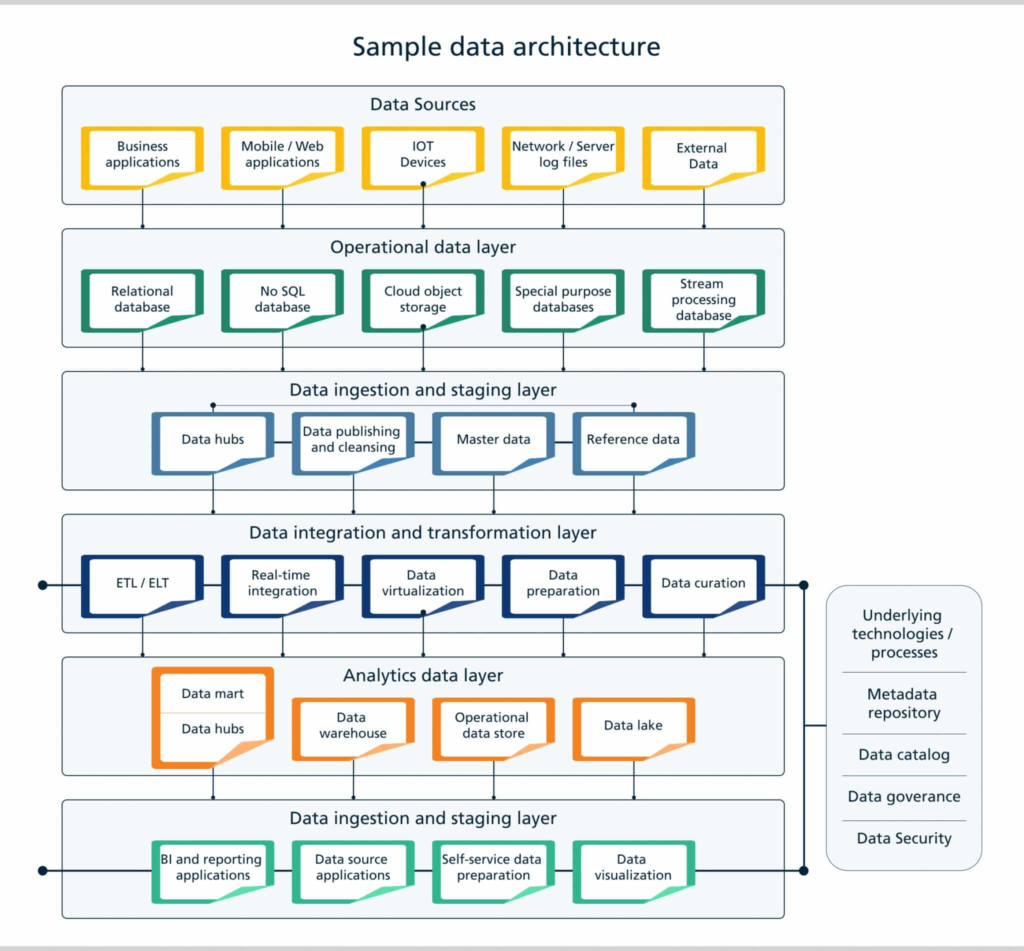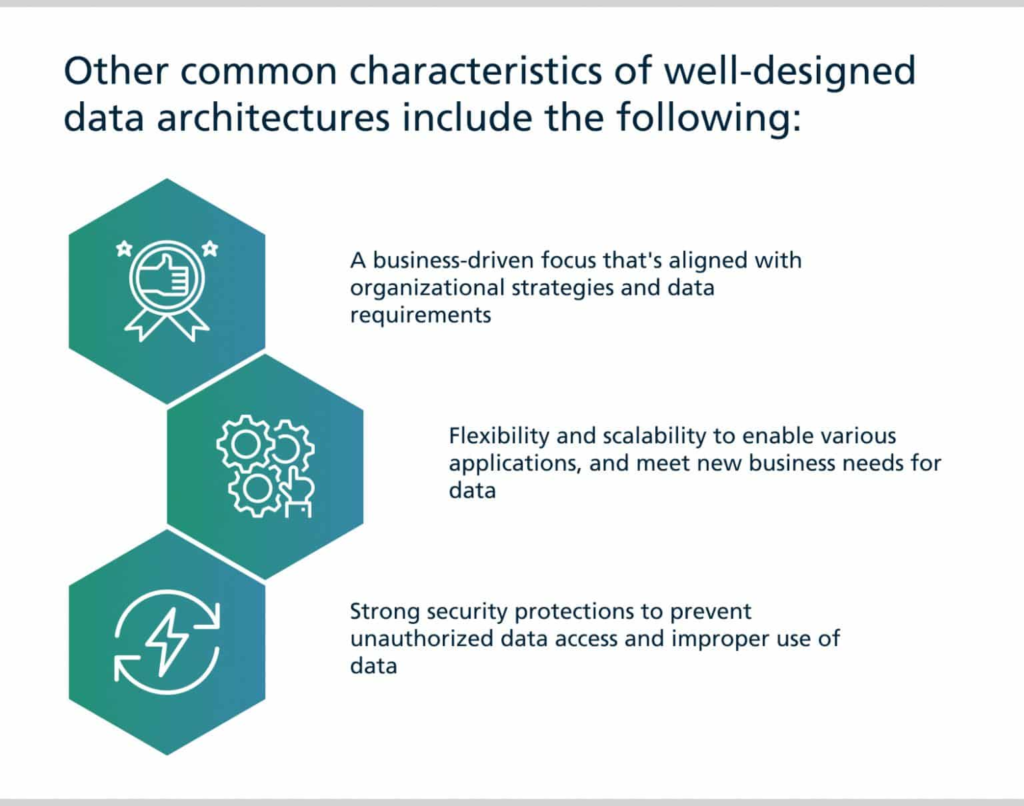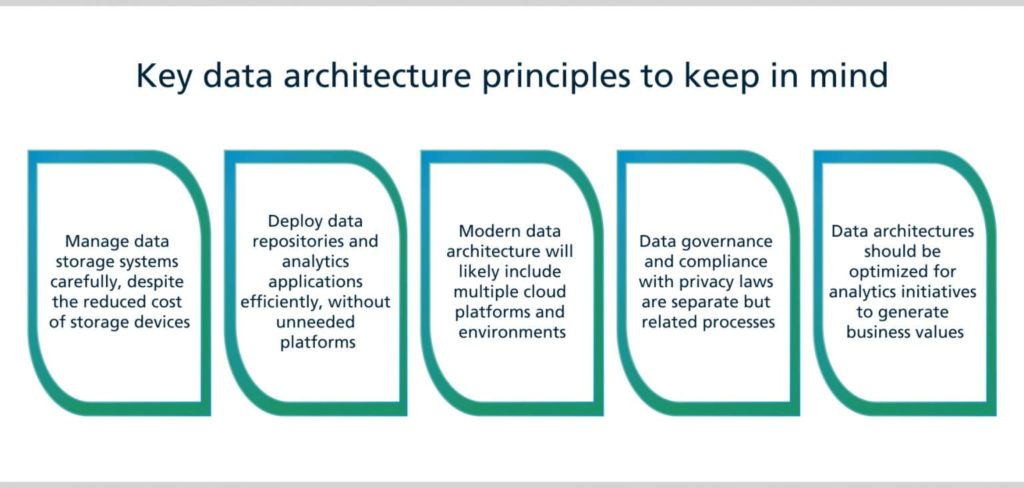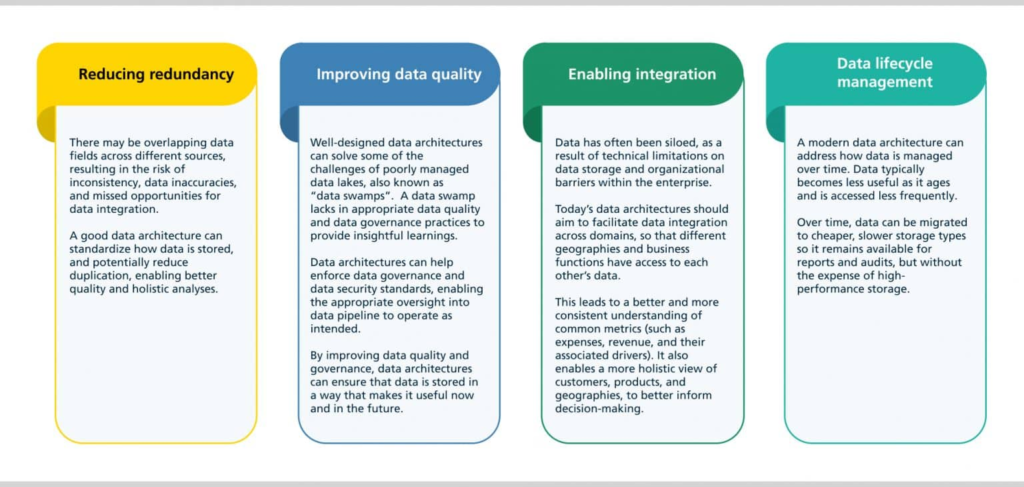
In today’s business landscape, the primary objective for organizations is to ensure effective data management that aligns with their information needs and beyond. To achieve this, many invest in building a robust data architecture, a discipline that catalogs an organization’s data assets, outlines the flow of data within its systems, and establishes a blueprint for effective data management.
Data architecture not only supports operational applications but also provides a multi-layered framework for data platforms, management tools, and sets specifications and standards for data collection, integration, transformation, and storage. It plays a pivotal role in defining the underlying data environment for business intelligence (BI) and advanced analytics initiatives.
Ideally, the design of data architecture should be the first step in the data management journey. However, this is not always the case, leading to inconsistent environments that require harmonization as part of the data architecture process. Furthermore, while data architectures are foundational, they are not static; they must evolve as both data and business needs change. This makes them an ongoing concern for data management teams. Data architecture is closely related to data modeling, which creates visual representations of data structures, business rules, and relationships between data elements. While they are distinct disciplines, they work together in data management. This article explores the concept of data architecture, its significance, and the business benefits it brings.
The Evolution of Data Architectures
Historically, data architectures were simpler, primarily involving structured data from transaction processing systems stored in relational databases. Analytics environments typically consisted of a data warehouse, sometimes supplemented by smaller data marts tailored for individual business units, and an operational data store for staging. Data was processed for analysis in batch jobs using traditional extract, transform, and load (ETL) methods for data integration.
From the mid-2000s onward, the rise of big data technologies introduced unstructured and semi-structured data into many data architectures. This shift led to the creation of data lakes, which store raw data in its native format rather than filtering and transforming it before analysis, marking a significant departure from traditional data warehousing. This transformation also paved the way for the adoption of ELT (extract, load, transform) data integration, which reverses the order of the ETL process.
The growing use of stream processing systems has further integrated real-time data into modern architectures. Today, many architectures also support artificial intelligence and machine learning applications, alongside traditional BI and reporting driven by data warehouses. The migration to cloud-based systems has added another layer of complexity to data architectures.
Another emerging concept is the data fabric, designed to streamline data integration and management. It offers a variety of potential use cases within data environments.

Why is Data Architecture Important?
A well-crafted data architecture is essential to the overall data management process. It plays a key role in supporting data integration and enhancing data quality, while also facilitating data engineering and preparation efforts. Additionally, it enables effective data governance and the establishment of internal data standards, both of which are crucial for ensuring that data remains accurate and consistent.
Data architecture serves as the foundation for a data strategy that aligns with business objectives and priorities. As Donald Farmer, Principal at TreeHive Strategy, highlighted in an article on key data strategy elements, “a modern business strategy depends on data.” This underscores the importance of data management and analytics, which should not be left to individuals alone. To effectively manage and leverage data, an organization must develop a comprehensive data strategy, anchored by a solid data architecture.

What Are the Characteristics and Components of a Data Architecture?
Modern data architectures must incorporate both data governance and regulatory compliance processes, along with the increasing demand to support multi-cloud environments. Based on our observations, the business value of data will be squandered if the data architecture doesn’t enable its availability for analytics purposes. While it’s often stated that data is a valuable business asset, we understand that data that remains unused is merely a cost center—it requires ongoing maintenance without delivering any real business value.

From a purist’s perspective, the components of data architecture do not include platforms, tools, or other technologies. Instead, data architecture is seen as a conceptual framework, represented through a series of diagrams and documents. These artifacts serve as guides for data management teams in making technology decisions and managing data effectively.
Examples of these components or artifacts include:
1. Data models, definitions, and shared vocabularies for data elements
2. Data flow diagrams that show how data moves through systems and applications
3. Documents that connect data usage with business processes, such as a CRUD matrix (Create, Read, Update, Delete)
4. Additional documents outlining business goals, concepts, and functions to ensure alignment with data management efforts
5. Policies and standards that dictate how data is collected, integrated, transformed, and stored
6. A high-level architectural blueprint that includes different layers for processes like data ingestion, integration, and storage

What are the benefits of a data architecture?
Ideally, a well-designed data architecture helps an organization develop effective data analytics platforms that deliver useful information and insights. In companies, these insights improve strategic planning and operational decision-making, potentially leading to better business performance and competitive advantages.
Data architectures also aid in various other applications, such as the diagnosis of medical conditions and scientific research. Also, it helps in improving data quality, streamline data integration and reduce data storage costs, among other benefits. It does so by taking an enterprise view compared to domain-specific data modeling or focusing on architecture at the database level.
Well-constructed data architecture can offer businesses several key benefits, which include:

What are the risks of bad data architecture design?
One data architecture pitfall is too much complexity. The dreaded ‘spaghetti architecture’ is evidence of that, with a tangle of lines representing different data flows and point-to-point connections. The result is a ramshackle data environment with incompatible data silos that are hard to integrate for analytics uses. Ironically, data architecture projects often aim to bring order to existing messy environments that developed organically. But if not managed carefully, they can create similar problems.
Another challenge is getting universal agreement on standardized data definitions, formats and requirements, without which, it’s hard to create an effective data architecture. The same goes for putting data in a business context. Done well, data architecture ‘captures the business meaning of the data required to run the organization’. But, failing to do so may create a disconnect between the architecture and the strategic data requirements it’s supposed to meet.


